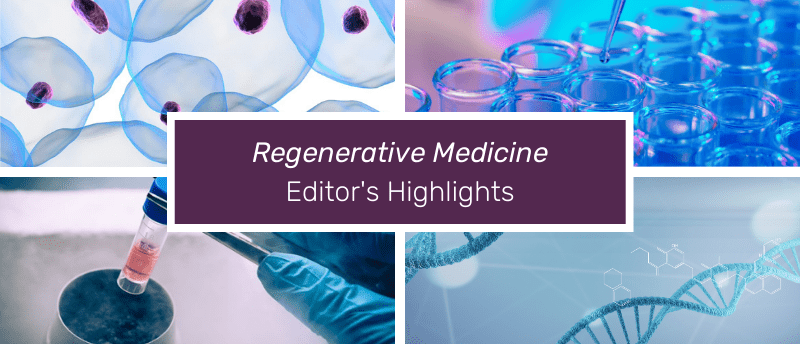Regenerative Medicine Highlights: January – March 2024

Journal Development Editor, Jasmine Hagan, shares her top papers from the January, February and March issues of Regenerative Medicine.
With quarter one now at an end, 2024 commenced on a promising note marked by an array of articles published covering topics including bioprinting in tissue engineering, bioengineering and mesenchymal stem cell therapy.
In this feature, I share some of my top articles from issues 1, 2 and 3 of Volume 19, providing a snapshot of some of the most exciting work in the field, published in Regenerative Medicine.
Experimental and computational approach to establish fit-for-purpose cell viability assays
In recent years, there have been exciting developments in the cellular therapy field, offering promising alternatives for treating various diseases. A robust manufacturing and development process is key to ensuring the quality, safety and effectiveness of the final cell therapy product. Despite the advancements, identifying and selecting of fit-for-purpose, informative cell measurements remain a challenge in the cellular therapy field. Seeking to address this, Pierce et al provide a framework based on an experimental and computational approach for selecting a fit-for-purpose viability assay that can predict changes in cell proliferation. The researchers highlight the importance of developing cell viability criteria based on selected outcomes to achieve a desired proliferative outcome in both cell therapy and cell-based gene therapy manufacturing.
Early delivery of human umbilical cord mesenchymal stem cells improves healing in a rat model of Achilles tendinopathy
Utilizing a rat model of Achilles tendinopathy, this study by Yuan et al set out to investigate the efficacy and optimal delivery time of human umbilical cord mesenchymal stem cells for the treatment of the condition. Two different stages of mesenchymal stem cells intervention were compared to determine the impact of this on treatment outcomes. Findings from the study suggested that early intervention may be key to favorable outcomes, with the team observing improvements in the pathological manifestations of Achilles tendinopathy, along with increased expression of genes associated with collagen synthesis.
The challenges and prospects of smooth muscle tissue engineering
Vascular diseases are one of the leading causes of morbidity and mortality worldwide. This has prompted research into tissue engineering strategies for generating functional vascular smooth muscle cells to replace and repair damaged blood vessels. In this special report, Baldwin et al explore the prospects and the challenges of smooth muscle tissue engineering strategies. Despite the challenges faced with identifying optimal cell sources, understanding biochemical cues and recapitulating the intricate microenvironment found in native vascular tissues, the potential of this approach in revolutionizing treatment strategies for vascular diseases remains evident. The authors emphasize the importance of interdisciplinary collaboration and innovative approaches in order to successfully achieve the goal of creating lab-grown tissues for regenerative applications.
Don’t forget to check out the rest of the articles from the January, February and March issues of Volume 19.
If you have any queries about Regenerative Medicine or are interested in publishing in the journal, please contact Journal Development Editor, Jasmine Hagan ([email protected]).